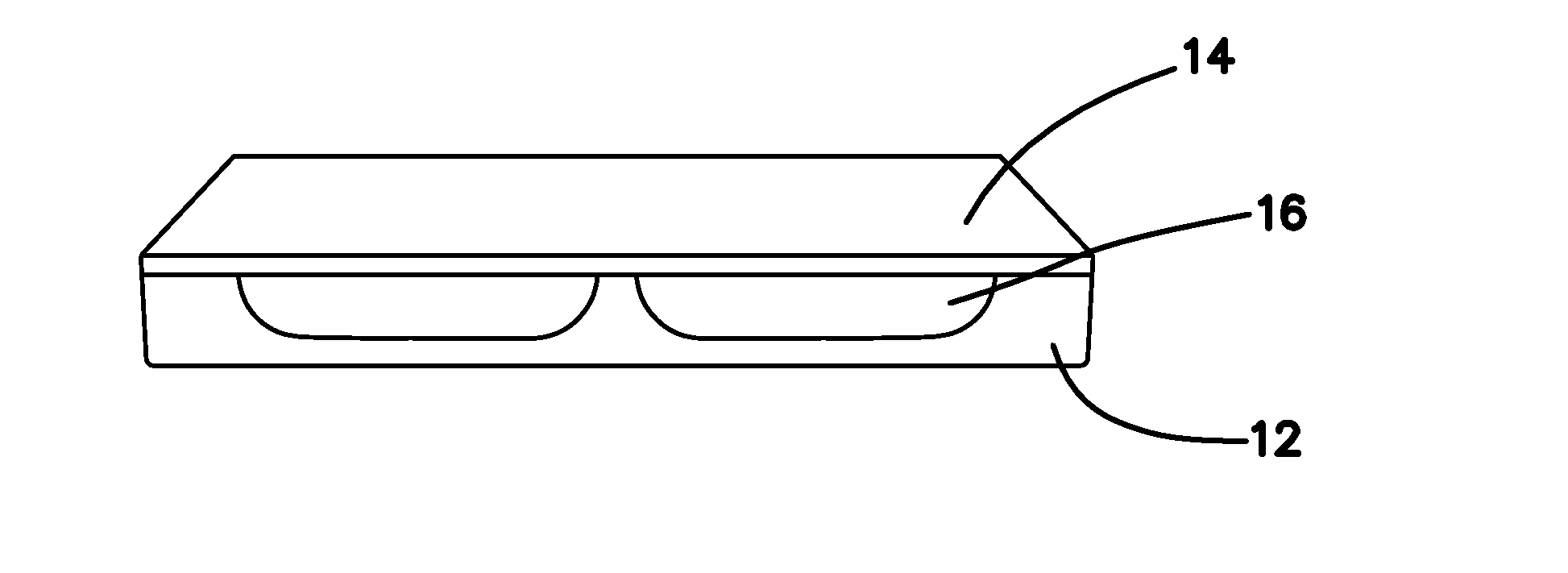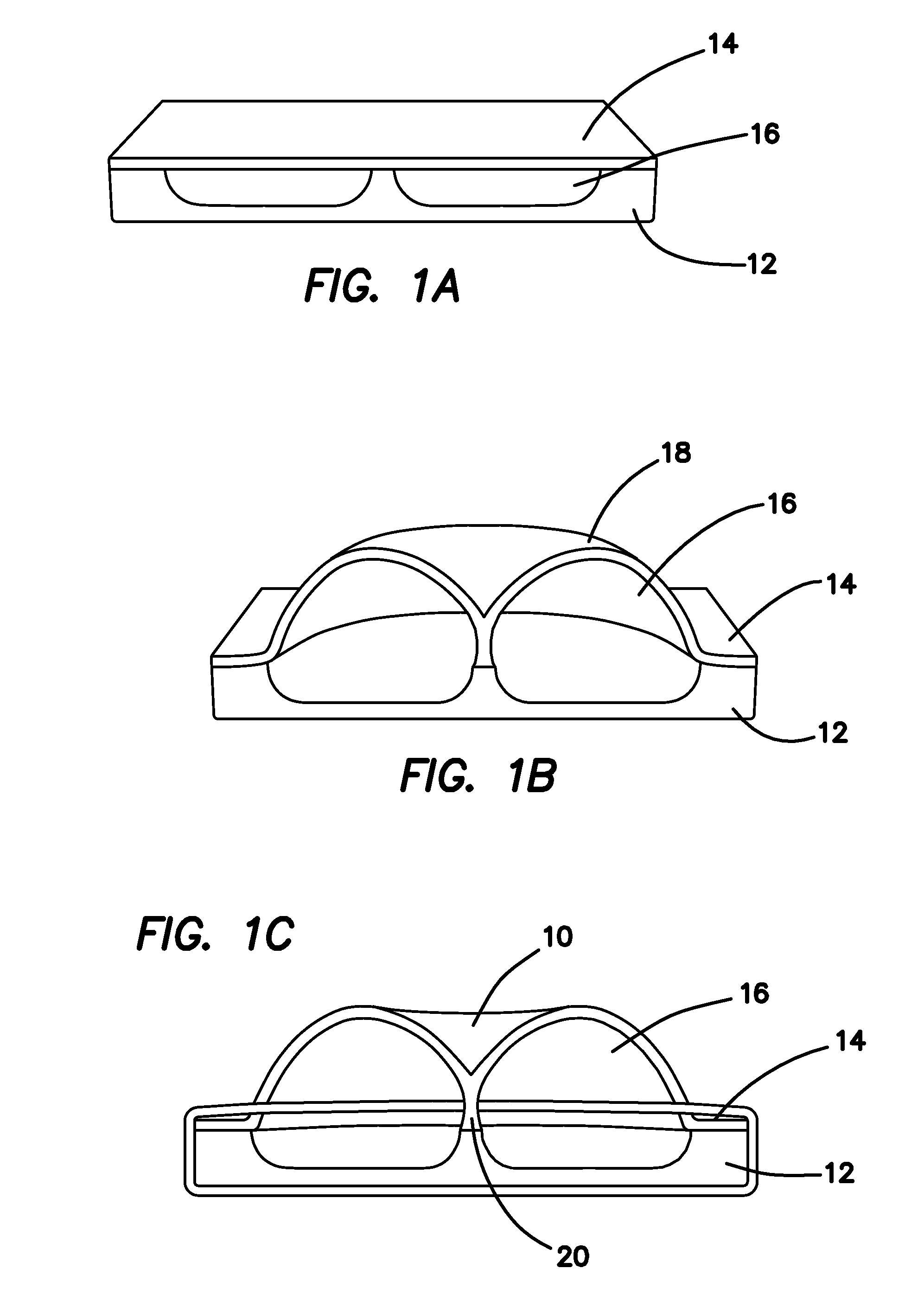Microfabrication of High Quality Three Dimensional Structures Using Wafer-Level Glassblowing of Fused Quartz and Ultra Low Expansion Glasses
a technology of fused quartz and microfabrication, which is applied in the field of microfabrication, can solve the problems of large power consumption, poor performance, and limited two-dimensional architecture of conventional microelectromachined devices, and achieves low internal loss materials, high q-factor, and high symmetry
- Summary
- Abstract
- Description
- Claims
- Application Information
AI Technical Summary
Benefits of technology
Problems solved by technology
Method used
Image
Examples
Embodiment Construction
[0060]The approach comprises of a high temperature micro-glassblowing process and a novel inverted-wineglass architecture that provides self-aligned stem structures as seen in FIGS. 1A-1C. An in-house process capability of 1800° C. glassblowing with a rapid cooling rate of 500° C. / min was developed. Feasibility of the process has been demonstrated by fabrication of TSG / fused quartz micro-wineglass structures.
[0061]The illustrated embodiments of the invention are generally directed to a micro-glassblowing based MEMS process for low expansion and low internal loss materials such as Titania Silicate Glass (TSG) and fused quartz. The illustrated embodiment of the invention further comprises a method for fabrication of three dimensional wineglass structures through glassblowing and method of fabricating tine structures on the glassblown resonators. The invention further includes in additional embodiments the fabrication of electrode structures for excitation and pick-off in MEMS three di...
PUM
| Property | Measurement | Unit |
|---|---|---|
| diameter | aaaaa | aaaaa |
| diameter | aaaaa | aaaaa |
| temperature | aaaaa | aaaaa |
Abstract
Description
Claims
Application Information
 Login to View More
Login to View More - R&D
- Intellectual Property
- Life Sciences
- Materials
- Tech Scout
- Unparalleled Data Quality
- Higher Quality Content
- 60% Fewer Hallucinations
Browse by: Latest US Patents, China's latest patents, Technical Efficacy Thesaurus, Application Domain, Technology Topic, Popular Technical Reports.
© 2025 PatSnap. All rights reserved.Legal|Privacy policy|Modern Slavery Act Transparency Statement|Sitemap|About US| Contact US: help@patsnap.com



